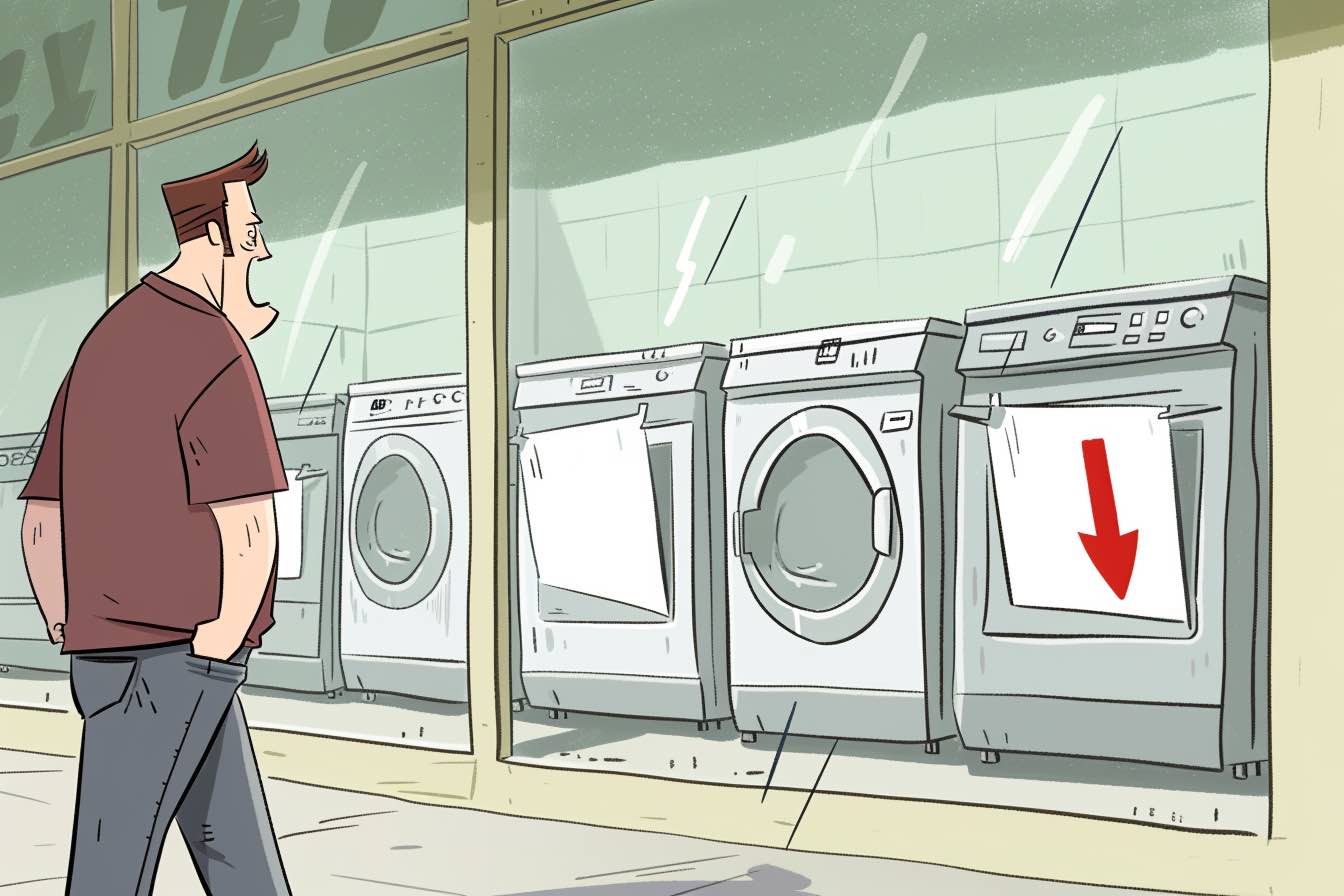It’s been more than a year since Virginia Cepero returned the dining room chairs she bought on the Pottery Barn website. The company insists it refunded her money months ago, but Cepero can’t find it.
What do you do when it’s a company’s word against yours? And how do you defend your position when the company throws up a favorite defense tactic?
The deeper I dug into Cepero’s case, the more convinced I became that corporate America’s favorite new strategy for keeping your money is still largely a secret. I’ll tell you about it in a second. I’ll also reveal how to avoid a chaotic return like this and get your money back from Pottery Barn.
Why did she return her chairs to Pottery Barn?
Cepero bought two solid hardwood dining chairs from Pottery Barn in late 2020. Made of kiln-dried rubberwood, they looked perfect for her dining room. The models she chose, the Aaron dining chairs, are made by “skilled artisans,” according to Pottery Barn. They feature an X-shaped back crafted for “precise” symmetry. The contoured seats and curved backs offer subtle flared details.
But they didn’t make a good fit for Cepero’s dining room. Pottery Barn offered “easy returns” (its words). Specifically, “You can return eligible item(s) within 30 days of receiving an order or 7 days for Quick Ship upholstery items for a refund of the merchandise value.” So she quickly sent them back and figured she’d receive a prompt refund from the company.
Cepero waited and waited. And the money never showed up.
A credit card dispute — and the beginning of a confusing quest for a Pottery Barn refund
Cepero’s response was understandable. After not receiving her money, she filed a credit card dispute. She showed her bank that she had indeed returned the chairs but hadn’t received a refund from Pottery Barn.
The company fought the dispute and tried to re-charge her for the furniture. So Cepero refused to pay her credit card bill.
“Pottery Barn now says I still owe it for the chairs,” she says. “I also have interest and late fees on Capital One, my credit card. My credit is being negatively affected because they are showing the account is past due.”
How did this happen? The answer will probably melt your brain. (OK, it almost melted my brain.)
What happened after she returned the merchandise?
It turns out Cepero had purchased three items — the two hardwood chairs and another item, which she decided to keep. That created some confusion. Next, she received a partial refund, which she didn’t recognize. So she filed a credit card dispute for the entire amount.
Pottery Barn fought that dispute, leaving her with incorrect charges on her credit card. So she simply refused to pay the bill while she fought the charges. (Refusing to pay your credit card bill is not an effective dispute strategy.)
How confusing did all of this get? I reviewed the correspondence between her, her bank, and Pottery Barn. It became so confusing that I couldn’t follow all the charges. My fellow advocate, Dwayne Coward, an expert on complicated credit card charges, took a look at her case and understood a little more. But in the end, he was also overwhelmed with the complexity of this case.
One thing was certain: Cepero had returned the chairs but hadn’t received a full refund yet. We were still on the case.
Is complexity a way to keep your money?
Is this a secret strategy for keeping more of your customers’ money? One thing is for sure: My advocacy team is seeing a lot more cases like this.
Companies seem to be doing their best to confuse customers until they just give up and go away. They add restocking fees and surcharges or remove a percentage of the refund for reasons that aren’t entirely clear.
How confusing did it get? At one point, a company representative had to create a spreadsheet of the charges and refunds for Cepero. Of course, it didn’t agree with Cepero’s own accounting, so she kept fighting.
But imagine that! I pay you $349 for a dining room chair and then send it back for an “easy” refund — and you send me a spreadsheet to explain why you can’t refund my money?
Yet that is what more and more consumers are facing. This drive to complexify is a proven strategy. I don’t blame the good employees of Pottery Barn; these are systems the company creates, knowing full well that confusion will allow it to pocket more money from their customers. The employees are just working in the system.
What went wrong with this Pottery Barn refund?
A closer look at the paper trail between Cepero, her bank, and Pottery Barn reveals a third party added to the confusion. (Related: My Pottery Barn slipcovers have faded.)
Pottery Barn says it issued a partial credit, but her refund was $755 short since Cepero wanted Pottery Barn to cover late fees and interest from Capital One. When she didn’t receive the refund she expected, she initiated a credit card dispute.
And that made things even worse.
Pottery Barn’s dispute department contacted her and presented her with its accounting of the purchase, return, dispute and refund. According to its records, it had already fully refunded her.
Our advocacy team reviewed the back-and-forth between Cepero and Pottery Barn. There were layers of fees, charges, chargebacks, and partial credits. Ultimately, it was unclear who was the source of the confusion — only that everyone was very confused. And that includes us.
A credit card dispute should be one of the last things you do when questioning charges from a company. I like to call it the nuclear option. If your bank finds in your favor, you get all your money back. But if it doesn’t, you may need to go to small claims court to get relief.
Also, the regular customer service channels might be closed to you once you’ve filed a dispute. So be careful about going down this path.
I’m not sure if refusing to pay your credit card bill is the way to resolve a dispute like this one. After a year, Capital One had heaped late fees into Cepelo’s account, and her credit score had begun to suffer.
There’s a better way to fix this Pottery Barn refund problem.
How to get a refund from Pottery Barn
Getting your money back from a business like Pottery Barn is relatively straightforward — if you know how to navigate the shoals.
- Ask for your money back in writing if possible. Pottery Barn allows returns online and in stores, according to its refund policy. If you return your merchandise online, make sure you keep a paper trail of your request, a UPS tracking label, and an acknowledgment of the item. If you return the item in a store, get a receipt.
- Get the amount of your refund in writing, too. It’s not enough to have a receipt for the item; you also need to know how much you will get for it. That’s particularly important when the business changes the price of an item. Are they going to refund the price you paid or the sales price? Little-known fact: If you get a promise from a business to refund an item, and it fails to do so, your credit card company will view the correspondence as a debit memo and side with you in a dispute.
- If you made a purchase by credit card, be patient — but not too patient. Two to three billing cycles can seem like an eternity. That’s the average amount of time it takes for a business to return your money (in a perfect world, it would be much, much faster). If it takes longer than that, prepare to fight for the refund. It’s an easy win for you since you have all the documents!
How to reach Pottery Barn when you have a problem with a return
Sometimes, a short but polite email to an executive can get your complaint reviewed by someone at a higher level. We publish the names, numbers, and email addresses of the Pottery Barn executives on this site. (Williams Sonoma owns Pottery Barn.)
I recommended that Cepelo try contacting Pottery Barn in writing.
She carefully and politely outlined her arguments for why Pottery Barn still owed her $755.
“That same day, I got a call from someone at Williams Sonoma, and the credit was issued immediately,” she says. “Capital One immediately removed the late fees and interest. My account is now at zero.”
There you have it — a seemingly unsolvable consumer problem that’s solved with a simple email to the right person. It’s the kind of resolution my advocacy team dreams about, because we’re all about consumer empowerment and self-advocacy. But what isn’t fixed is the endless complexity that people still face when they ask for a simple refund. Whom do we write to about that?




